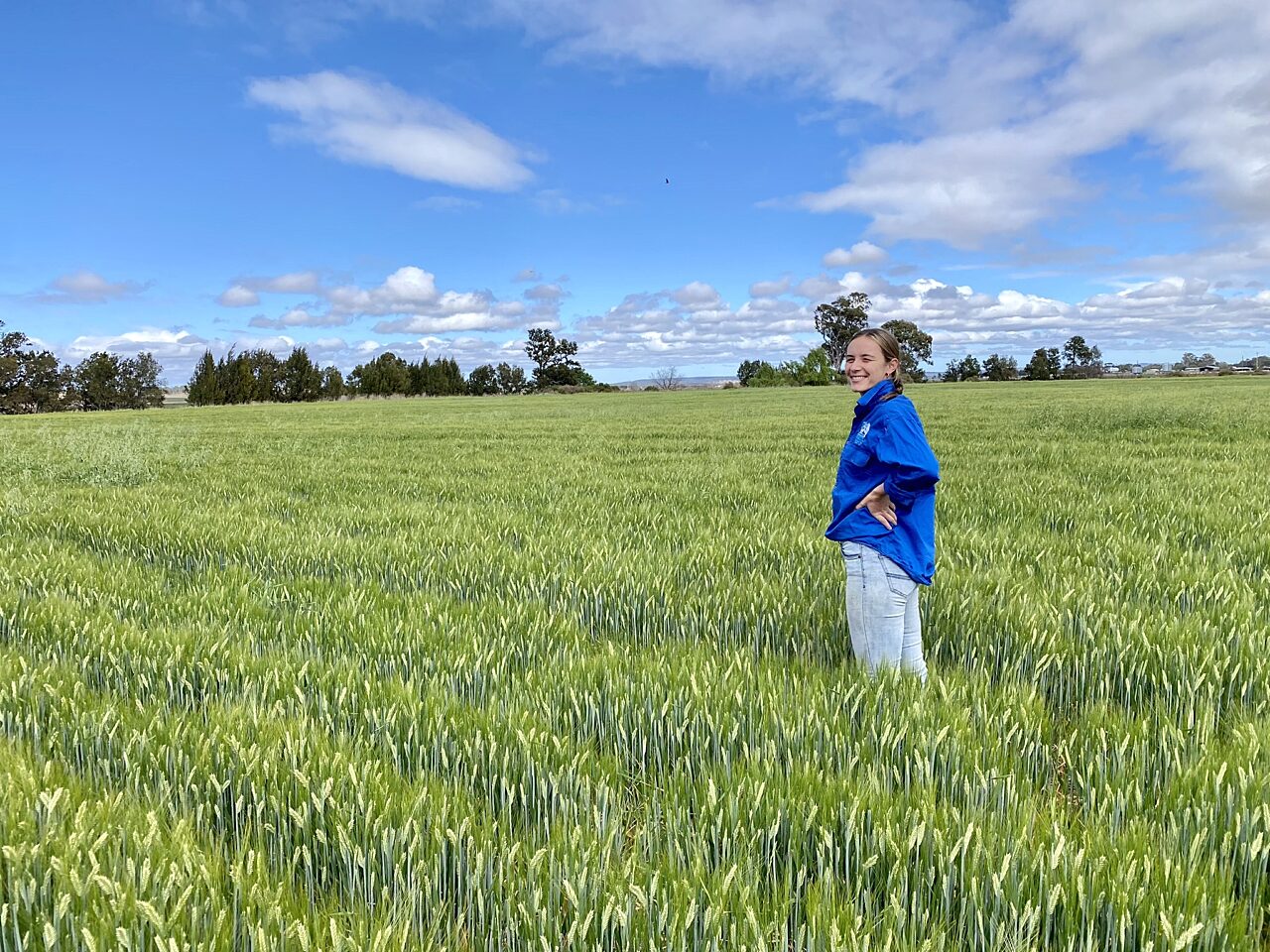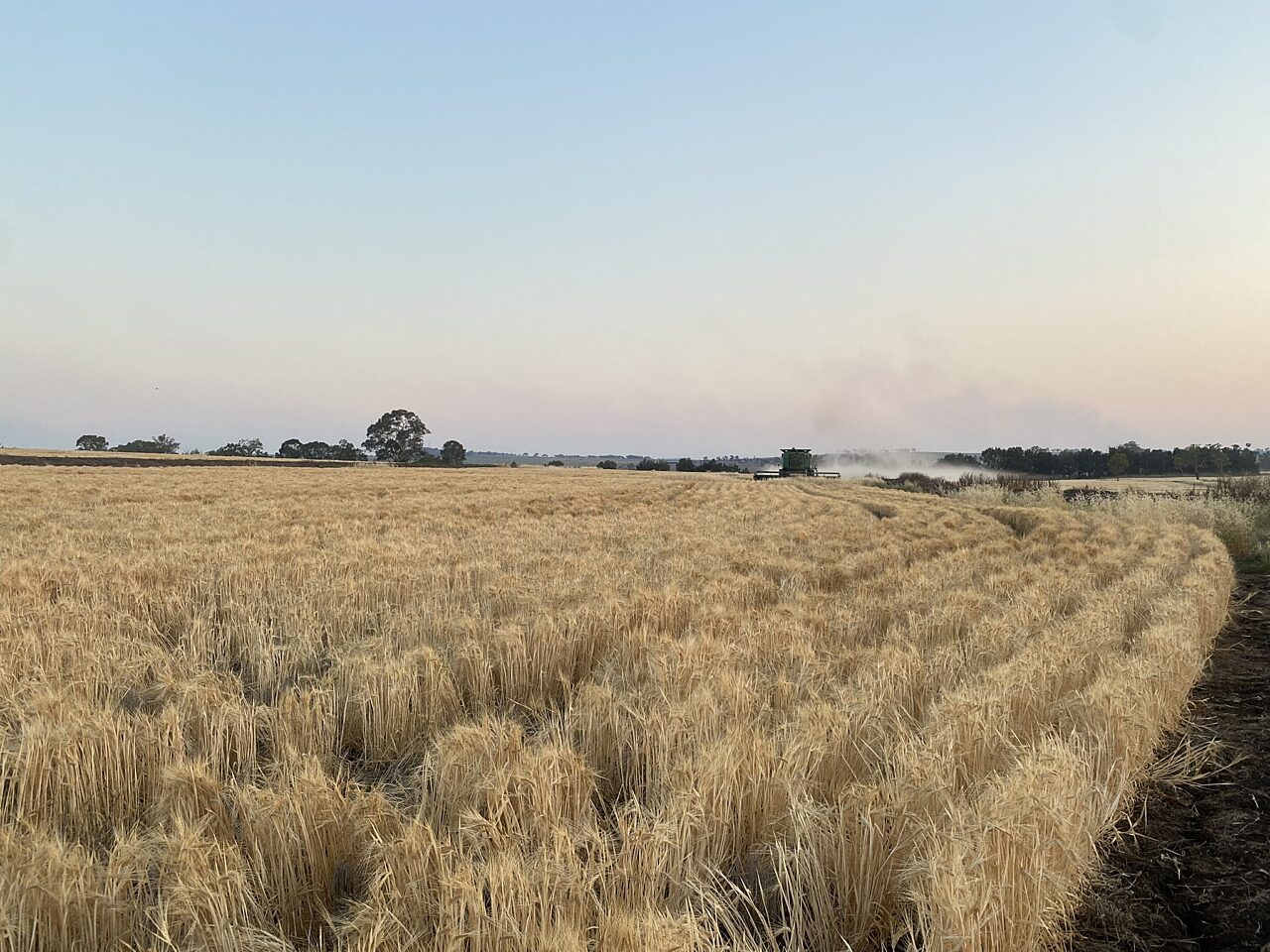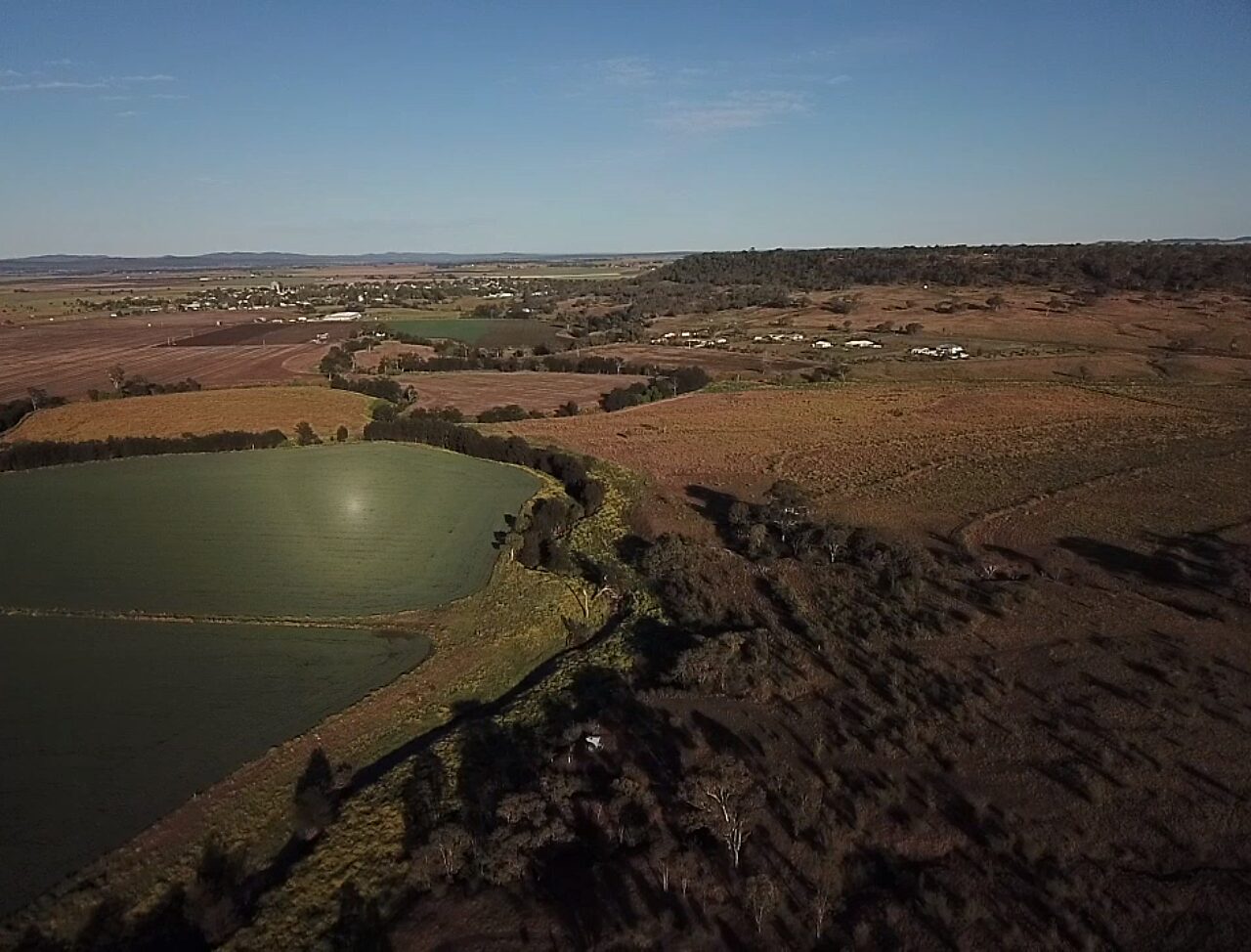Idea In Brief
Agricultural land is under unprecedented pressure
We need to rethink how land can deliver food, sustainability, culture, and energy at the same time, recognising that these are all deeply interconnected.
We lack adequate systems to track changes in high-value land areas
Detailed, up-to-date data is essential for making decisions that value give equal weight to agriculture, nature, communities, and our future prosperity.
There are valuable lessons to be learned from overseas
By examining how other countries manage land, we can gain insights into data modernisation, multifunctional farm values, and planning at a system level.
Standing on my farm in Allora, on the Southern Downs in Queensland, I take in the life around me. To my right, slow-grazing cattle move through swaying grass, while birds fly overhead and call to one another. Down the hill, the black-soiled creek flats stretch wide, holding the promise of winter barley. This land produces something precious: food, life, and sustenance.
But it does far more than just that. Across the creek, new houses have sprung up, where young families are building their futures. On the horizon, the wind turbines of the McKintyre Wind Precinct turn steadily, generating renewable energy. Native birds weave through scattered red gum trees, while the slopes of Allora Mountain rise in the distance, carrying stories of ancient culture from the Githabul people.
Everywhere I look, this land is being asked to do more: to feed people, sustain nature, preserve culture, generate energy, and support vibrant communities. And as I take it all in, I ask myself: How do we make decisions today that protect this precious farmland while delivering on all other things we require it to do for us? How do we turn this pressure into possibility?
Asking more of the land
This question drove my two-year journey as a Nuffield Scholar. With AgriFutures’ support, I travelled through 14 countries and spoke with more than 100 farmers, policy advisors, and industry leaders. I found a shared reality: agricultural land is under unprecedented pressure, and we are not prepared to manage the competing demands. My research explored the forces driving land use change and asked how we can respond, not by choosing between food, nature, culture, or energy, but by rethinking how land can deliver these benefits together.
The Agriculture and Land Sector Plan released this week outlines a national approach to reducing emissions. In doing so, it highlights the scale of the land use challenge ahead. As other sectors decarbonise, agriculture’s share of national emissions is projected to rise from 28 per cent today to 37 per cent by 2035. If on-farm emissions reductions remain limited, then secondary abatement (i.e. through soil carbon, tree planting, and landscape restoration) must occur at scale. The plan makes one thing clear: land will need to deliver more.
In response, I want to share some headline findings from my research, highlighting the critical risks facing our land and the importance of getting this right, not just for agriculture, but for the economy, the environment, and the prosperity of our communities.


There are four things we need to understand about how agricultural land is being used in Australia today
1. While more than half of our continent is classified as agricultural land, only around 13 per cent actually produces the bulk of our food
These productive patches (i.e. the intensive use zone) are mostly found along the coast, where soils, climate, and infrastructure line up just right. Even though our land seems vast, the places that truly sustain our food system are rare and precious.
2. Most of this most productive farmland sits on freehold land near towns and population centres
That makes it highly visible – and highly vulnerable – to competing pressures like housing developments, re-foresting for carbon, energy projects, and infrastructure. Our land tenure models and population settlement patterns mean that the land we rely on most to feed people is also the land with the most intensified competition and therefore the most at risk of being taken out of food production.
3. Australia’s farmland area is shrinking, but total production continues to rise
Like most developed countries, Australia no longer expands its total area of farmland. Instead, gains in technology, innovation, and intensification have enabled farmers to produce more on less land. This trend reflects a shift in how agricultural productivity is achieved, and highlights the growing pressure on a smaller, more valuable land base to deliver multiple outcomes.
4. We don’t have an adequate system to track what’s happening to our high-value land areas
We lack detailed, up-to-date data on how our farmland is currently used, the pace its being converted to other uses, what’s driving those changes, and what it means for our future food supply. We’re making decisions about competing uses of the land without really knowing what we stand to lose.
A complex web of environmental, social, and economic pressures is reshaping how we use our agricultural land
Environmental pressures – the heat of droughts, unpredictable rainfall, degraded soils, and water scarcity – are transforming the natural landscape. The National Climate Risk Assessment released last week paints a stark picture of the changing climate conditions challenging our country and food systems. I saw the consequences of this environmental variability on global food systems during my Nuffield scholarship travels, with nearly every country I visited having recently experienced a natural disaster. This global pattern underscores just how widespread and intense these environmental pressures have become.
Social pressures – population growth, changing diets, and rising expectations for sustainability – are contributing to the pressure. Our farmland is being asked to feed people, store carbon, conserve biodiversity, and support communities all at once. The announcement of the Government’s emissions reduction target of 62-70 per cent by 2035 requires new forests half the size of Victoria to be grown within 10 years, followed by further forests twice the size of Tasmania, to reach net zero by 2050 and support the achievement of our carbon abatement targets. These plantations are not likely to be grown in the outback, but rather on existing farmland near the coast, where the climate is most favourable and where land tenure models are most flexible. In other words, they are most likely to be grown in our existing ‘intensive farming’ areas, which produce most of our food. Globally, the Land Gap Report projects that up to 1 billion hectares of reforestation will be needed to meet international climate pledges, an area roughly two thirds of global arable land.
Economic pressures – rising input costs, volatile markets, and concentrated capital – are having impacts upon who farms and how. In Australia, the largest 10 per cent of farms now produce half of all agricultural output. This reflects a recent trend towards the decoupling of agricultural land values from commodity returns, as farmland prices have climbed while incomes lag behind. At the same time, we no longer rely solely on expanding land area to grow food: production volumes have continued to rise even as the land base has contracted. Farming is becoming more intensified and decision-making more concentrated.


More than a field for growing crops
This is a transformation unlike anything we’ve faced before, and it’s the most urgent and existential threat facing our agricultural industry. The pace of this transformation is only accelerating. Economic shocks and climate events are no longer rare disruptions: they are becoming our new normal.
Our national leaders and policy makers need to realise that agricultural land is no longer simply a field for growing crops: it is central to our climate strategies, energy systems, biodiversity, food security, urban growth, and cultural heritage. Every decision about land touches multiple issues and stakeholders, and is weighted with multiple, overlapping responsibilities and opportunities. Our agricultural leaders cannot afford to make decisions in isolation, and similarly for our energy, environment and health leaders.
We must rethink how we classify, measure, and manage agricultural land, not just to protect food and fibre, but to unlock its full potential. On my travels, I saw five opportunities for Australia to rethink how we use farmland and respond to these growing demands. These are practical opportunities to get the ‘system settings’ right, so that land use decisions better reflect the full value of farmland, reduce conflict, and unlock long-term benefits.
Opportunity 1: Modernise land data to recognise high-value farmland
Right now, our systems treat farmland in blunt categories – cropping, grazing, conservation – when, in reality, our best land is doing many things at once. It grows food, stores carbon, supports biodiversity, and sometimes even hosts energy projects or tourism. Without high-resolution, accurate data that reflects this reality, our most productive farmland remains invisible in decision-making and vulnerable to being lost.
In the United States, farmland is given an identity. “Prime Farmland” is the best soil for staple crops, while “Unique Farmland” is land perfect for specialty crops like citrus or nuts. States can also mark land of “statewide” or “local importance.” This simple system makes the value of farmland visible, so when land use decisions are made, agriculture is part of the equation.
Adopting a similar classification system in Australia, grounded in modern, high-resolution land data, would make the true value of farmland visible, helping governments and communities make smarter land use decisions that protect agricultural productivity, support regional economies, and guide investment in climate resilience.
Opportunity 2: Recognise and embed the multi-functional value of farms
Farms do more than produce food. They regulate the climate, support wildlife, preserve cultural heritage, and create spaces for communities to thrive. By managing land sustainably and valuing both productivity and multifunctionality, we can optimise long-term benefits for farmers and society alike.
In Japan, people in cities recognise nearby farmland as more than food production. They describe rice paddies as natural air conditioners, community fields as gathering places, and green landscapes as vital for wellbeing. It shows what becomes possible when we recognise the multifunctional benefits farmland provides, especially when it is nearby to major population centres.
Embedding the multifunctional value of farms into planning and policy frameworks in Australia would help unlock new partnerships, guide investment in ecosystem services, and ensure farming communities are recognised not just as food producers, but as stewards of landscapes and wellbeing.
Opportunity 3: Plan land use at the system level to balance competing demands
We cannot make land-use decisions in isolation. Allocating land for energy, housing, or conservation in one area can unintentionally shift pressure elsewhere. By thinking at the landscape scale, we can balance competing demands, protect high-value farmland, and make choices that support communities, the economy, and the environment together.
In Germany, regional spatial plans integrate energy, food, and housing, sometimes enabling dual-use, like solar panels over grazing land, to avoid zero-sum outcomes. By seeing the landscape as a whole, the Germans showed how farmers can turn conflict into collaboration.
In Australia, implementing system-level land use planning through regional spatial could enable dual-use innovations (like agrivoltaics), reduce land-use conflicts, and ensure that agricultural, environmental, and infrastructure priorities are balanced across landscapes.
Opportunity 4: Empower community-led planning for land use transitions
Land use change does not happen in isolation, and communities are at the frontline of these transitions. By embedding local voices, transparent processes, and adaptive governance into planning, we can ensure land use decisions reflect community needs while balancing economic, environmental, and social outcomes.
I saw some of the most inspiring community led planning models at home, in Australia. For example, Queensland’s Western Downs communities have already navigated significant land use changes through the rollout of onshore gas development. These experiences provide valuable lessons on what works, what doesn’t, and how to manage competing pressures effectively. By embedding local voices, transparent processes, and adaptive governance into planning, future land use changes can build on these lessons rather than repeating past mistakes.
To support future land use transitions, Australia should scale successful community-led models – like those in the Western Downs – through co-designed planning processes that actively involve First Nations communities, farmers, and local governments, ensuring decisions are locally grounded, socially legitimate, and adaptable to changing pressures.
Opportunity 5: Focus policies on outcomes to enable nuanced land use strategies
Effective land use strategy depends on clarity about the outcomes we’re trying to achieve, not merely about the amount of land involved. When policies are designed around expanding or changing land area, rather than delivering specific environmental, economic, or social outcomes, they risk oversimplifying complex land use decisions.
In the United Kingdom, the Sustainable Farming Incentive demonstrated this to me firsthand. Much of the policy debate focused on how much land would be involved, rather than what outcomes that land would deliver, such as improved soil health, biodiversity, and carbon storage. This focus on area over impact made it harder to assess whether the program was achieving its intended goals.
Australia can learn from this. By designing policies that focus on outcomes – like landscape resilience, ecosystem services, or community wellbeing – we can enable more adaptive, locally relevant land use strategies. This shift would support better decision-making, clearer evaluation, and more effective use of our limited supply of productive land.


Let's breathe in deeply and get to work
These five opportunities – gathering better data, valuing multifunctionality, planning at a system level, empowering community-led action, and focusing land use polices on outcomes – show a path for stewarding our land wisely. They offer a way to ensure the farmland we rely on today can continue to feed people, support communities, and sustain the environment for generations to come. But real progress depends on more than good ideas. It requires clear, evidence-based, and fair decision-making about how we use our limited supply of valuable and suitable land. As expectations on farmland grow, we need to be deliberate about how we prioritise and plan for land use change - so that we make the best use of what we have, and ensure long-term benefits for people, regions, and the landscape itself.
Standing back on my farm in Allora, I breathe in deeply, knowing that the dirt beneath my feet has been here for millions of years, and will still be here in a future that spans well beyond my lifetime. I have a real sense that this point in my time – my lifetime as a farmer of this land – is loaded with both great responsibility and great potential.
Because the choices we make today about how we measure, value, and plan our farmland will determine how this land continues to carry life, culture, and opportunity long after my time here.
Get in touch to continue the conversation about managing competing resource demands.
Connect with Sally Higgins on LinkedIn.

